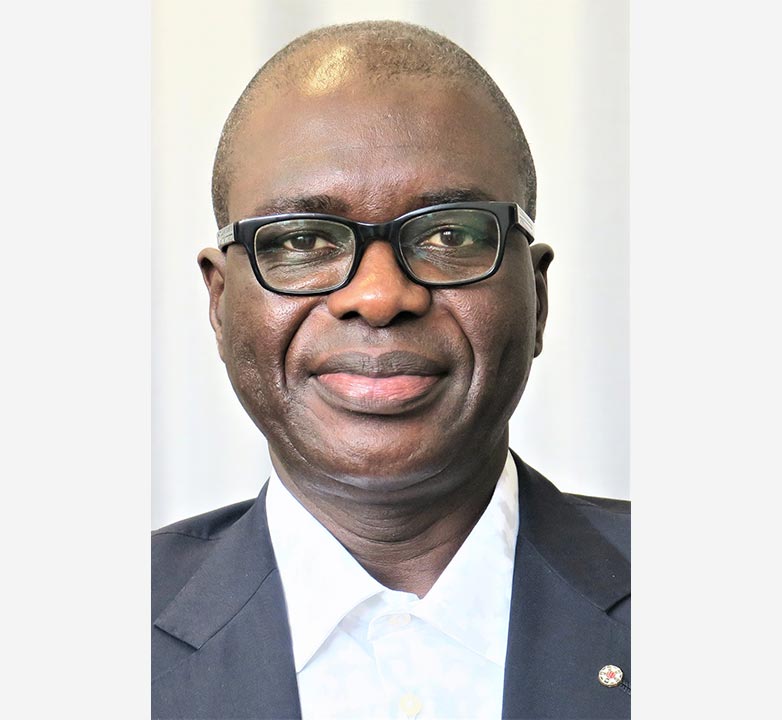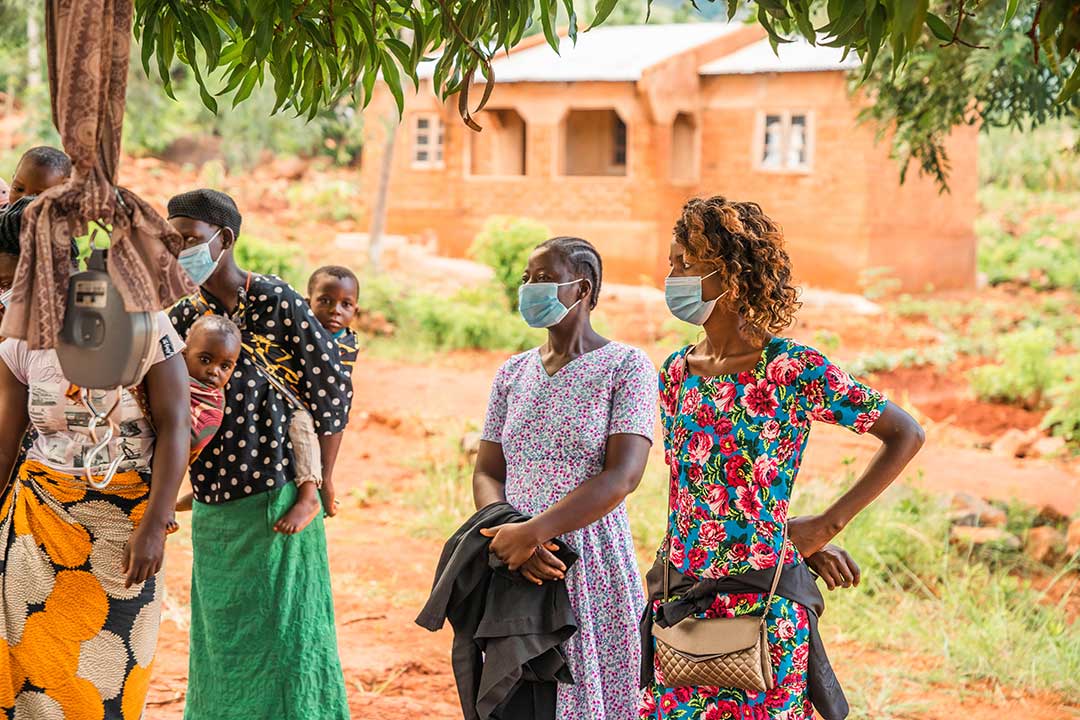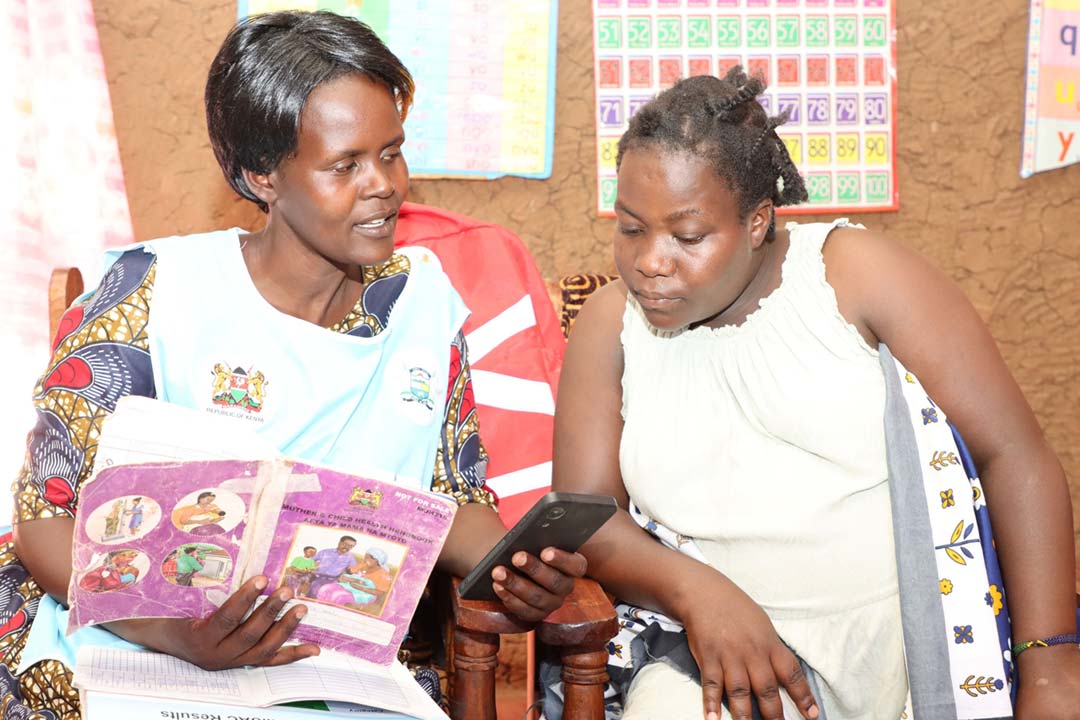Wild polio returns to Africa: How the GPEI is helping stop an outbreak from becoming an inferno
In February 2022, a year and a half after the continent was declared indigenous wild poliovirus-free, the virus resurfaced in south-eastern Africa. As the Global Polio Eradication Initiative kicks off pledging to fund the 2022-2026 strategy, VaccinesWork dives into what exactly happened in Malawi and Mozambique, where eight children have been paralysed by an infectious threat that really isn’t over until it’s over everywhere.
- 17 October 2022
- 12 min read
- by Josephine Chinele , Maya Prabhu

In mid-February 2022, Dr Modjirom Ndoutabe, then the Polio Rapid Response Team Coordinator at the WHO Regional Office for Africa, was on mission in Senegal when he received an email that made his head spin. “I can say it seemed like the sky was falling in on our heads,” Dr Ndoutabe says.
Bad news in Dr Ndoutabe’s line of work is frequently heart-breaking: when polio manages to break through a community’s immunity ramparts, the breach is typically signalled by the paralysis of a child. While the February email did concern a paralysed child – a three-year-old girl living with her grandparents in a township in Lilongwe, Malawi, who had first fallen sick in November – it constituted bad news on another scale altogether.
Polio experts have long warned that polio spreading in one country is a threat worldwide. Fires throw sparks. COVID-19 has shown the world just how difficult it is to make national borders act as a limit to transmissible pathogens, and the poliovirus still circulating in Pakistan and Afghanistan was always only a plane-ride away.
What Dr Ndoutabe was staring at on his laptop screen, was a lab report specifying precisely which variety of poliovirus it was that had invaded the child’s nervous system. “I said, ‘My God – it’s true? Can it really be WPV1?’” Dr Ndoutabe recalls.

Credit: WHO AFRO
WPV1 stands for "wild poliovirus type 1," the last wild strain still at large in the world. In early 2022, as far as Dr Ndoutabe knew, wild polio had no business being anywhere on the African continent. A year and a half earlier, in August 2020, the WHO African Region had been declared wild polio-free, an achievement decades in the making.
For the wider world, it was a signal that the end was in sight. The virus's once-global province had officially narrowed to just two countries where transmission was ongoing: Afghanistan and Pakistan. But now, here it was in Malawi, of all places – a country which had last had a case of wild polio in 1992, and had seen no polio of any sort for a decade.
"We are dealing with cVDPV2 [elsewhere] in our region," explains Dr Ndoutabe, who served as interim Polio Coordinator for WHO AFRO between March and October of this year. He is referring to circulating vaccine-derived polio virus type 2, a variant of polio that originates from the weakened strain of the virus contained in the oral polio vaccine (OPV).
In rare instances, the weakened, safe virus contained in the oral vaccine can change genetically in the gastrointestinal tract of a child. If that child happens to belong to a community that is incompletely vaccinated, the altered vaccine-derived virus can spread , continuing to change as it hops from child to child.
Rarely, that virus winds up capable, like the wild virus, of causing paralysis – an uncommon but still alarming complication of a global vaccination campaign that has managed to stamp out 99.9% of polio since the 1980s.
Every outbreak, no matter its provenance, is a worry – but cVDPV2, says Dr Ndoutabe, is a more predictable adversary than its wild-born cousin. “We’re a little bit confident that we can stop it very, very quickly. But if we’re dealing with WPV1 imported, that means the situation is really, really very much worse.”
Fire-fighting in Malawi
Within just 24 hours of receiving notice from WHO that wild polio had been confirmed in Lilongwe, Malawi declared a national health emergency. Support – in the form of a team of Global Polio Eradication Initiative (GPEI) experts – touched down in Lilongwe within a couple more days.
"What we faced at this time is that Malawi has spent 20 or 30 years without any cases. So it was a big issue to implement the campaign over there – we had to make the training – supervisors, national," Dr Ndoutabe says.
That was true on the vaccination frontlines too. With a decade and a half of service under her belt, Chikondi Nenani of Phalombe district is a veteran of Malawi's Health Surveillance Assistant (HSA) corps – a cadre of more than 11,000 grassroots health workers charged by the Ministry of Health with looking after basic healthcare in the community, giving health talks, and referring more complex cases to clinics and hospitals. But with polio, she found herself on unfamiliar ground.
"This was the most touching thing in the 15 years of my community health career," Nenani says. "Of concern is the fact that this is a dangerous, contagious and incurable disease. I thought about the health of my children too – this development meant a big risk to them."
Dr Mike Chisema, Expanded Programme on Immunisation (EPI) Programme Manager in Malawi’s Ministry of Health called the recurrence “shocking, disappointing and frustrating”. And yet, as surprising as it was, polio experts have long warned that polio spreading in one country is a threat worldwide. Fires throw sparks. COVID-19 has shown the world just how difficult it is to make national borders act as a limit to transmissible pathogens, and the poliovirus still circulating in Pakistan and Afghanistan was always only a plane-ride away. To a perfectly immunised country, that would present no risk at all. But more than one country’s public health programmes suffered during the pandemic lockdowns, widening cracks in coverage – invisible pathways for contagion.
“Mozambique, it’s a very diverse, it’s a very huge country,” Hellström says. “It’s not that people are hesitant about vaccines. On the contrary, the challenge is reaching every child."

Genetic analysis of the sample isolated in the Lilongwe toddler had showed the virus belonged to a Pakistani strain of WPV1 traceable to Sindh province in 2019. In technical terms, that made it an imported case. But neither the Lilongwe child nor her family had travelled to Pakistan, indicating the virus had found its way to her via somewhere else in her community. Only one in 200 cases of polio results in paralysis, which means a single case of paralysis is, logically and also by polio-fighting convention, the tip of the otherwise asymptomatic iceberg – an outbreak all on its own. WPV1 had, in other words, probably been circulating quietly for some time.
What was clear was that the responsive vaccination drive needed to be quick, massive and meticulous. Nenani’s first assignment was to hold community sensitisation sessions to prepare families for the kind of granular immunisation drive that is day-to-day in Pakistan, and alien in Malawi.
On March 21, a nationwide door-to-door campaign targeting millions of children aged under five kicked off. Doreen Ali, Deputy Director of Preventive Health Services (Community) in Malawi’s Ministry of Health, says, “We didn’t want to miss any child. This was a bit hectic in the first round, because Malawians were not used to such an approach.”
In Phalombe district, Nenani shouldered a blue vaccine carrier bag containing 166 doses of vaccine, and walked from household to household, trying to ensure she reached every single child with polio drops. Then she did it again, each day, for five days. “The traditional leaders cleared us, but some sections of the community didn’t welcome us,” she remembers. “Some insulted us, some told us in the face that they didn’t want their child vaccinated. Too many vaccines have come at the same time, so some thought we wanted to give COVID-19 vaccines to their children.”
By the third round in August, she reports, attitudes were shifting. "Some could even call me to have their children vaccinated." Lokesh Sharma, UNICEF Vaccine Management Specialist in Malawi, echoes her. "Each round we are learning something, and based on our past experience, we are improving," he says.
But if the distance between Pakistan and Malawi didn't halt the virus, then the porous land borders between Malawi and its neighbouring countries would present little obstacle, Nenani understood. "At Mpasa Health Centre, we receive many disease cases of unimmunised children from Mozambique. Measles is the most prevalent one. Most of such children have never received any vaccinations. This got me thinking: polio could be worse," she says.
Embers in Mozambique
“We started vaccinating in Mozambique because it’s standard operating procedure when you have a case – neighbouring countries should vaccinate as well,” explained Jan-Marcus Hellström, Polio Team Lead for UNICEF in Mozambique. The hope was to head off viral spread from Malawi.
Have you read?
But in May, the first case of WPV1-induced acute flaccid paralysis (AFP) was discovered in a child in Mozambique’s northern Tete province, close to both Malawi and Zimbabwe. Since then, several more paralysed children have turned up in the same region. Lab analysis has shown that the virus in all the Mozambican cases in the current outbreak have been genetically linked to the same Pakistani “parent” WPV1. “We can definitely say that we have an outbreak that is of great concern,” says Hellström.
Unlike Malawi, Mozambique’s routine immunisation programme has historically struggled to achieve near-universal coverage. That has a lot to do with the country’s geography, a challenge the outbreak response campaign has also had to confront. “Mozambique, it’s a very diverse, it’s a very huge country,” Hellström says. “It’s not that people are hesitant about vaccines. On the contrary, the challenge is reaching every child.
“In Tete, where we have the five cases, I was part of the case investigation for four of those samples. The minimum distance for somebody to get to the nearest health centre was a good, six to seven hours. And that’s with a child on the back. So people live in very remote areas. And of course, we have had rains, cyclones, which have made things even worse. I’ve been with vaccination teams that have walked three to four hours to vaccinate three kids, right? And at the same time, these vaccination teams have a target that they have to vaccinate x amount of children per day.”
In these conditions, it was impressive that by the end of August, the vaccination campaign spearheaded by the Mozambican Ministry of Health had reached some 8.6 million children under five with protective polio drops. But was that enough? Is it over? Hellström fears not.
"I am afraid there's a big chance that we will find more [cases]," he says. "At the same time, we're seeing that our vaccination campaigns are getting better and better round by round – so hopefully we will have stopped it by the end of the year."
“This polio eradication initiative is the best programme I did ever see in my short life,” says Dr Ndoutabe, now 61 years old. “Because there is a kind of support – that dedication at the global level and on the national level. You are not alone. I can see that solidarity.”
And still, he underscores, the threat won't truly be over until polio is defeated everywhere. That means getting ahead of the risk; damping the potential for flying sparks to spread fires. "Routine immunisation is what needs to happen. It needs to be consistent and it needs to happen every day, in a sustainable way." He speaks urgently: "We need to come up with ways to reach those children that live far from health centres, and we need to keep it going."

Keeping it going
It's been a long road. In 1988, the World Health Assembly announced a plan to eradicate polio by the year 2000. Progress against the virus was rapid – the graph line of global cases tumbled towards the turn of the millennium. But 2000 came, and the virus wasn't done yet.
That year, a young Chadian physician and public health specialist at the University of Côte D’Ivoire joined the polio eradication struggle. “Me, I started hoping at this time that we’ll finish polio very quickly – 2010, or something like that. And then I’d focus on my career at the university,” Dr Ndoutabe says. “In 2020: Africa is polio free – I hope that okay, I focus now to my research… Unfortunately, until now, I am still running after polio.”
This last year has been hard. He chuckles, “Once I open my computer, I am ready to be scared. I’ll say: ‘Oh my God! Will I have news of new cVDPV2 or WPV1?’”
But there is comfort in the commitment of his fellow polio fighters – a vast, branching, diverse mesh of people. “This polio eradication initiative is the best programme I did ever see in my short life,” says Dr Ndoutabe, now 61 years old. “Because there is a kind of support – that dedication at the global level and on the national level. You are not alone. I can see that solidarity.”
As the next phase of the global mission to end polio kicks off at this year’s World Health Assembly, that global dedication looks set to be tested. Like the ongoing WPV1 outbreak in south-eastern Africa, the discovery of cVDPVs in New York, London and Israel this year represent cold reminders that victory against the paralysing virus is far from guaranteed. As Hellström says, “I don’t see why we couldn’t see cases from Tete or Malawi [cropping up] all over the world. Until all children are safe, no children are safe, regardless of where they are.”
The immediate goal in south-eastern Africa is to halt circulation by the end of the year, which would mean, according to Dr Ndoutabe, "that we've cleaned the situation". In addition to Mozambique and Malawi, Tanzania and Zambia have all conducted responsive immunisation campaigns, with Zimbabwe to join their number soon.
For now, Ndoutabe says that he is confident that Malawi – where no further cases have been found – will have done enough to stop the virus. He's less optimistic about Mozambique, which has now recorded seven cases. Outbreak response assessments in October will tell him if he's right about that, he says.
Surveillance is being strengthened across the region, which also means that it’s possible that more cases – more paralysed children – will be found. “Of course it’s horrible when we do find more cases, but at the same time, it’s better to find the cases that are out there now than not to find them at all,” says Hellström. There is some funding available through GPEI to make the lives of the unlucky children a little easier – to provide for physiotherapy, for wheelchairs. “But of course they’re not doing great,” Hellström says of the children found this year in Mozambique. “I mean, it’s polio. They are paralysed, and there is no cure.”
Hellström – who has worked in Pakistan and Afghanistan as well as in Mozambique – says he’s seen more than his fair share of children paralysed by the viral infection at this point. “Each one is a tragedy, because it’s so easy to prevent.”
More from Josephine Chinele
Recommended for you









